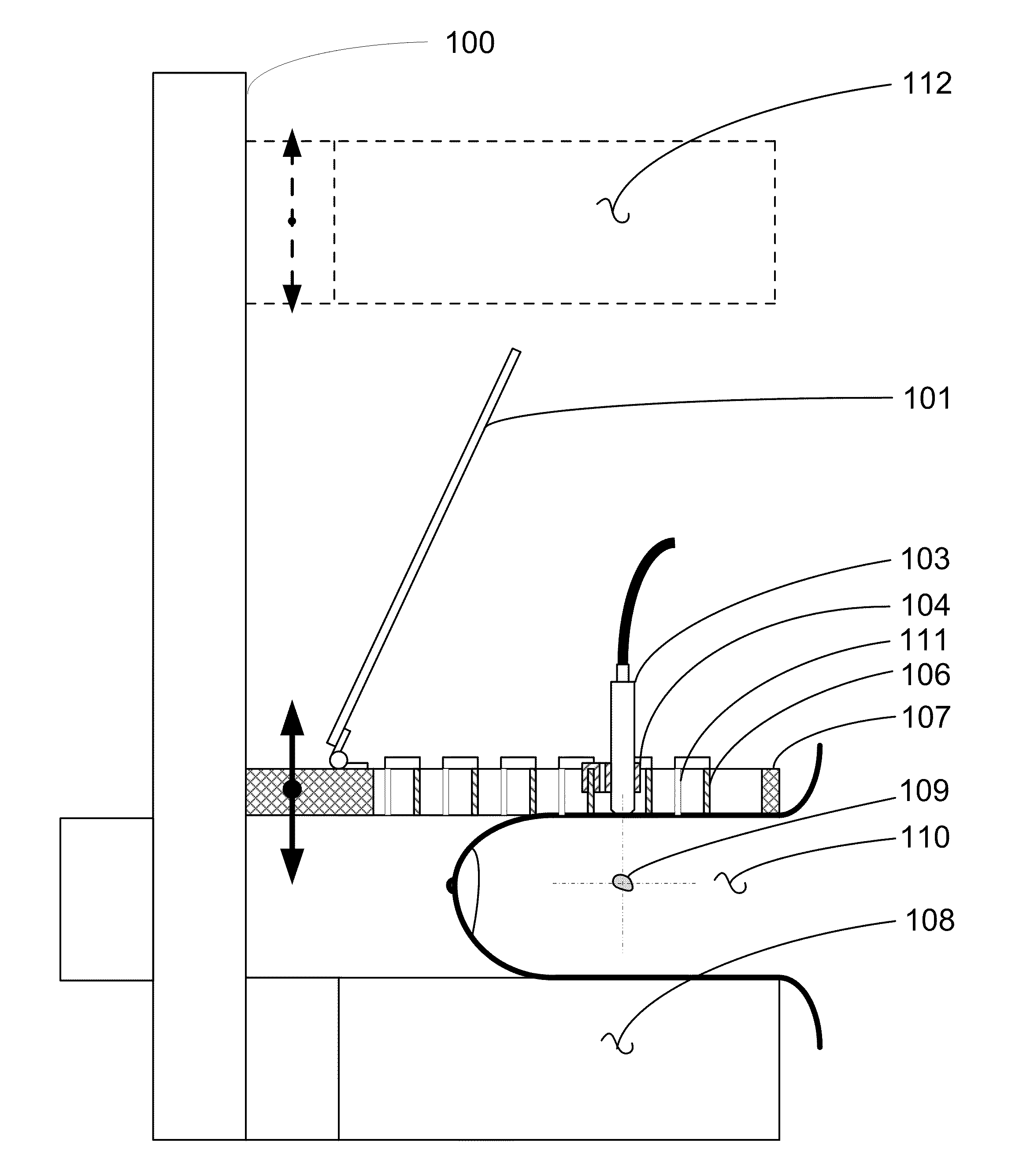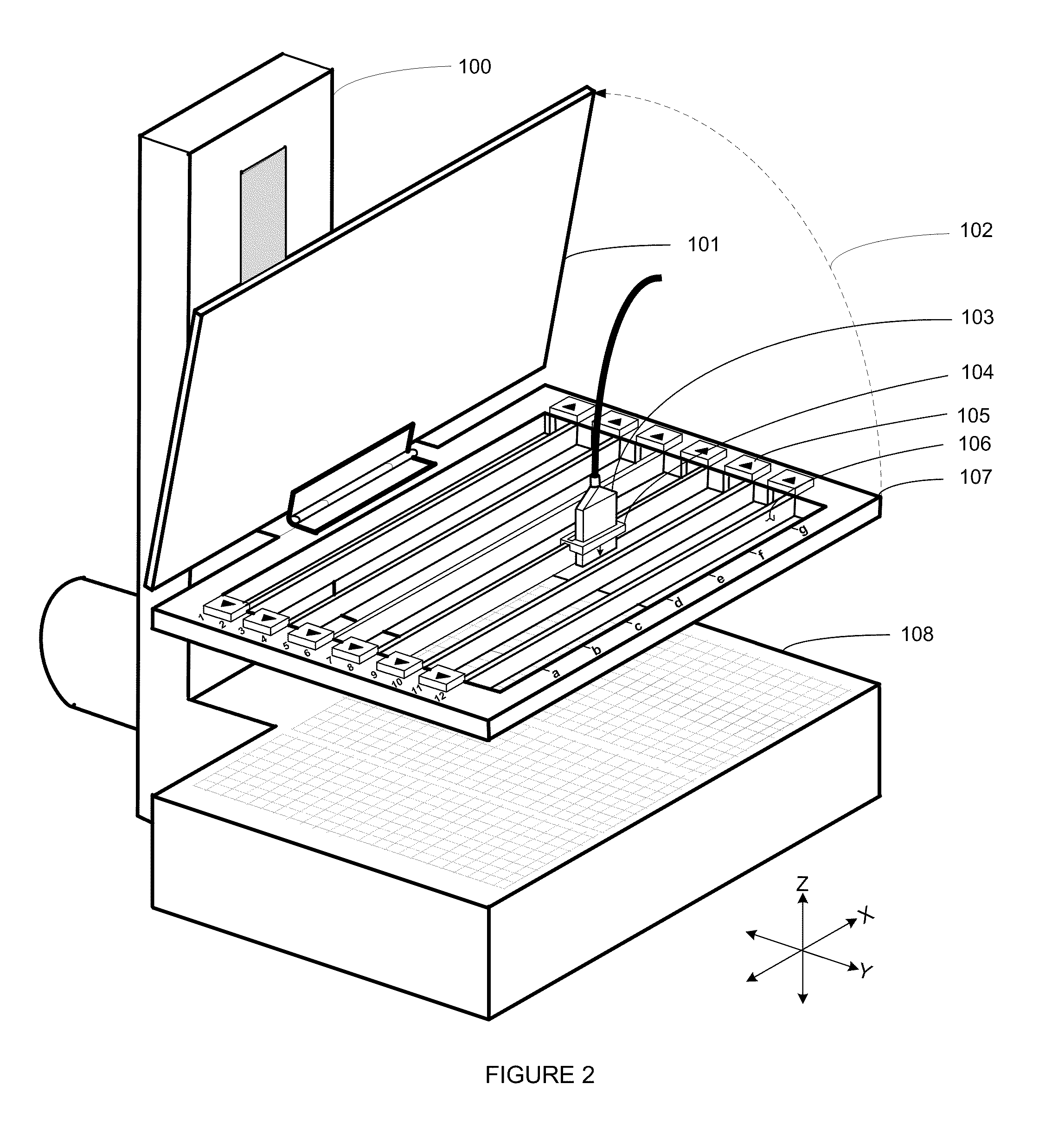Interventions Using Correlated Nuclear and Ultrasound Imaging
a nuclear and ultrasound technology, applied in the field of medical imaging, can solve the problems of guiding interventions using these methods, raylman fails to teach apparatus or methods to perform procedures within clinically acceptable time limits, and pelizzari fails to disclose apparatus or methods to utilize precise correlative methods, etc., to achieve the effect of quick and accurate positioning of interventional devices and simplified task of interventional device localization
- Summary
- Abstract
- Description
- Claims
- Application Information
AI Technical Summary
Benefits of technology
Problems solved by technology
Method used
Image
Examples
Embodiment Construction
[0015]Nuclear-emission imaging is sometimes used to identify abnormal cellular function(s) (e.g. glucose metabolism as with FDG-PET, mitochondrial proliferation as with sestamibi-scintigraphy) of a region of tissue (lesion) that may be associated with tumor growth (neoplasia). However, it is difficult to use nuclear-emission imaging alone to guide interventions due to the long image acquisition periods (e.g. five minutes), unacceptable nuclear-emission image spatial resolution and the transparency of most interventional devices to emission imaging.
[0016]Ultrasound imaging may be utilized to identify very subtle abnormalities in tissue density and structure that commonly result from neoplasia. However, abnormalities produced by cancer are difficult to distinguish from abnormalities produced by benign processes using ultrasound, and ultrasound alone is considered to have unacceptable specificity for early breast cancer detection. Notwithstanding, it is commonly understood that most su...
PUM
 Login to View More
Login to View More Abstract
Description
Claims
Application Information
 Login to View More
Login to View More - R&D
- Intellectual Property
- Life Sciences
- Materials
- Tech Scout
- Unparalleled Data Quality
- Higher Quality Content
- 60% Fewer Hallucinations
Browse by: Latest US Patents, China's latest patents, Technical Efficacy Thesaurus, Application Domain, Technology Topic, Popular Technical Reports.
© 2025 PatSnap. All rights reserved.Legal|Privacy policy|Modern Slavery Act Transparency Statement|Sitemap|About US| Contact US: help@patsnap.com



